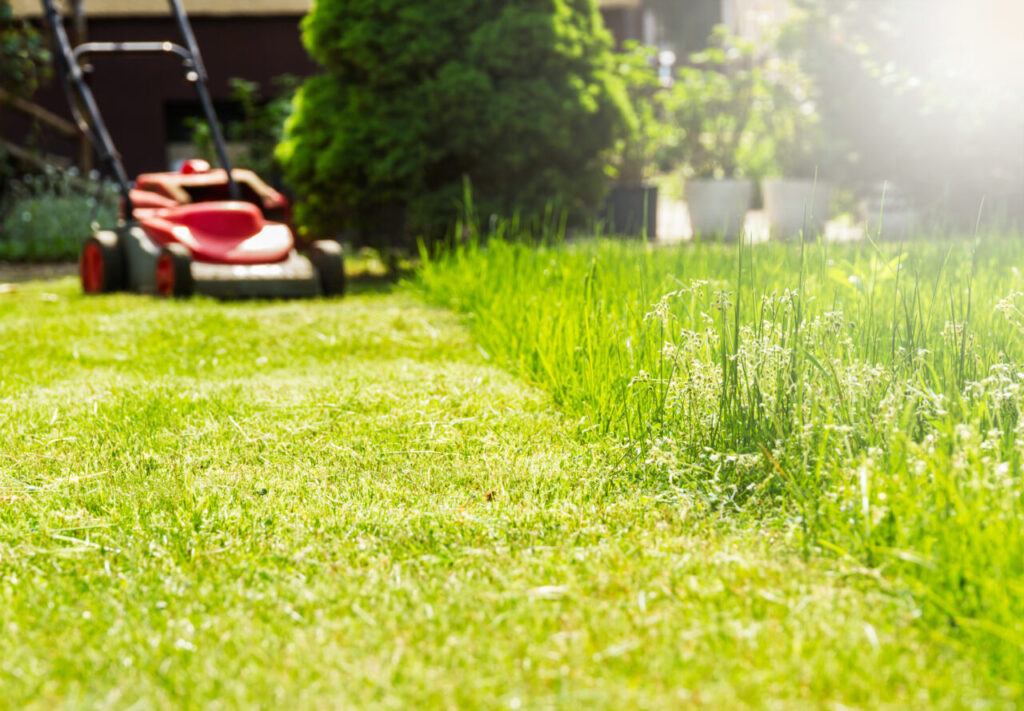A healthy lawn is important for owners and renters alike. Many condo and homeowners associations even require it.
But the grass always seems greener when the lawn care budget is higher. Lawn care can be expensive, with the cost of supplies, water, and energy needed to maintain its green.
Here are six ways anyone can start saving money on lawn care expenses this spring.
Who Can Save on Lawn Care?
Homeowners
Repairs and renovations are huge expenses for homeowners, and lawns and gardens need maintenance too. In fact, homeowners expect to spend $15,000 on home renovation projects. By spending money to care for their lawn, homeowners can increase their curb appeal and the value of their home, which will benefit them down the road if they decide to sell.
Rent-to-Own Tenants
Rent-to-own tenants typically lease a property for a set period of time, then have the option to buy the house from their landlord for an agreed upon price. These tenants will want to invest in space that will soon be theirs outright, and by saving on lawn care, they won’t have to sacrifice contributions to their future house purchase.
Renters
Renters deserve nice yards, too. Lawn care may be covered by the landlord or property manager, but renters tasked with addressing lawn maintenance themselves can take advantage of these cost-saving tips.
Do Maintenance Yourself Whenever Possible
Basic gardening tasks, such as weeding and watering, get expensive quickly. Calculate the annual or monthly amount you spend on professional gardeners, and resist the temptation to outsource lawn care and maintenance unless necessary. Save your gardening budget for the work that’s hard to do yourself, such as installing sprinklers or removing shrubs.
If you have a large lawn or are renting and don’t want to invest in a lawn mower, it will likely be more affordable to pay local youths or neighbors to help with mowing rather than a professional lawn service.
Scale Down Your Lawn
Water is one of the largest expenses for homeowners maintaining a lush, green yard.
Large lawns need a lot of water and dedicated time for maintenance. In hot summer months, lawns need 1 inch of water each week, which can add hundreds of dollars a year in lawn maintenance depending on the size of your lawn.
Reducing the grassy area in your yard is one way to cut down on watering expenses while adding dimension and interest to your outdoor space. You can mulch, plant trees, start an herb garden, or even add playground equipment for kids if you have them.
Make Your Watering More Efficient
Water at the right time of day to maximize benefits for your lawn and outdoor plants, especially in the summer. Watering your grass when the sun is highest will have the smallest impact because the heat will cause the water to evaporate faster.
Instead, try watering your lawn first thing in the morning when the sun is lowest in the sky and the humidity is typically higher. The water will evaporate more slowly as the temperature rises throughout the day and the lawn is exposed to more direct sunshine. Keep an eye on the forecast, too, and don’t spend money on extra water on a rainy day.
Buy Plants and Gardening Supplies Secondhand
Water is only one expense when it comes to caring for your lawn. Grass and plants sometimes need special products, such as fertilizer, to provide extra nutrients. Garden hoses, sprinklers, and lawn mowers also contribute to the overall expense of lawn care.
Online marketplaces on social networks and neighborhood community apps can be great resources for buyers looking for lawn care or gardening supplies at a lower price than big box stores.
Buying secondhand is also a sustainable practice that reduces the amount of waste in a community. You can even search local buy-nothing and freecycle groups to help you find home and gardening supplies for free.
Invest in Low-Maintenance Plants
Low-maintenance plants can help improve the appearance of your lawn and provide some added water-saving benefits. Leafy plants, such as hostas, provide more shaded areas for greater water retention on your lawn.
Planting perennials also helps reduce gardening costs and maintenance. Unlike popular annual plants, which only last for one season, perennials will come back year after year, saving homeowners or renters time and money.
Start a Home Compost Program
Fertilizers can be expensive, and almost every home has some amount of food waste each year. Households that want a more sustainable nutrient source for their yard can start a home compost program to turn that food waste into soil and save money.
Starting a home composting program is easy. Simply put plant-based food waste, such as paper towels, banana peels, or coffee grounds, into a single container instead of throwing it away with your trash. From there, you can invest in tools to turn that compost into soil or drop off your food scraps at a community garden or other facility. Both options allow you to waste less food and provide nutrient-rich compost for your lawn.
Expert Tips to Keep Your Lawn Green and Healthy


